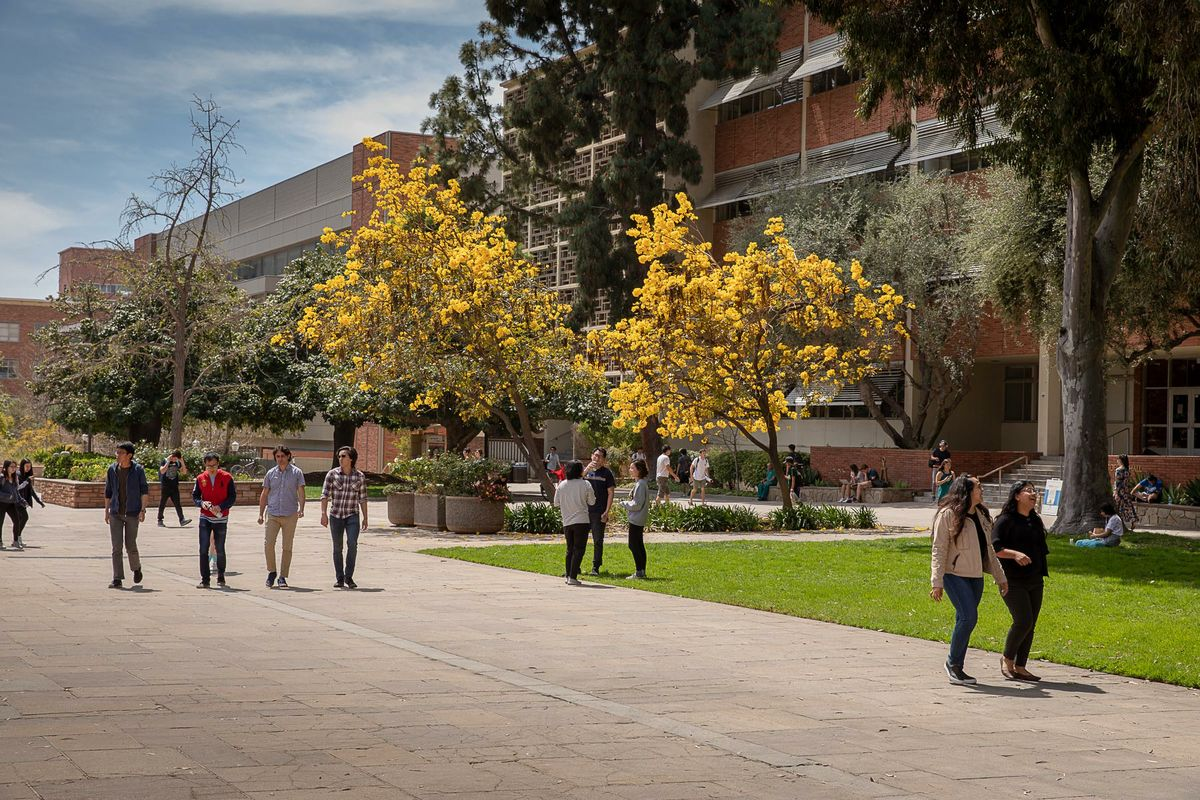The concept of "two cultures" is one that I have always observed at UCLA, not just by the differences in appearance between the two sides but also by the attitudes students on campus. Unfortunately, this geographical division has ultimately led to the stereotypical emergence, perpetuating the separations of disciplines and even the separation methodologies. (Vesna)
After viewing Two Cultures Lecture Part III, I noticed the differences in the buildings on campus. The new contemporary buildings have more of a corporate structure. In contrast, the older buildings have a church-like architectural design. (Vesna) This distinguishes the north and south campuses apart, as the buildings on the south campus are more modern compared to the north campus buildings.

As a psychology major, my classes are mainly located on the north campus, with some on the south. I witnessed the differences between the campuses, particularly with the ambiance. For instance, the north campus consists of the sculpture garden, which Mary Daily claims on the UCLA Newsroom that "every spring, a 5-acre sanctuary on UCLA's north campus blooms into a showplace, a postcard of beauty and serenity." (Daily) Additionally, Matt Flynn says, "... crowds of students walking to class around Young Hall are always larger than any I've seen north of Royce Hall... students in North Campus there seem more relaxed reading books or having picnics." (Jung)


In Two Cultures and the Scientific Revolution, Snow argues for the significant cultural gap between the humanities and the sciences, as he observed that intellectuals were often divided into two: specialized in the sciences or humanities. The lack of understanding and appreciation between the two cultures could lead to miscommunications, missed opportunities for collaboration, and misunderstandings. Snow believes that "If one begins by thinking only of the intellectual life, or only of the social life, one comes to a point where it becomes manifest that our education has gone wrong, and gone wrong in the same way" (Snow 35) and pleas for greater communication and collaboration between the two. This highlights the importance of recognizing the value of both disciplines in addressing the complex challenges facing society.
This lecture allowed me to appreciate the diverse perspectives in recognizing the existence of the two cultures and the interconnectedness of different areas of knowledge. I can utilize new ideas and perspectives to bridge the gap between different cultures of knowledge, enhancing my communication and collaboration skills in various settings.
Works Cited: “Court of Sciences.” UCLA Newsroom, https://newsroom.ucla.edu/file?fid=5cafc74e2cfac23fe608661a. Accessed 5 April 2024. (Figure 2)
Daily, Mary. “The Secret Garden | UCLA.” UCLA Newsroom, 5 January 2023, https://newsroom.ucla.edu/magazine/franklin-d-murphy-sculpture-garden-history. Accessed 5 April 2024.
Jung, Justin. “A campus divided | PRIME.” PRIME, https://prime.dailybruin.com/justinnorth&southcampus. Accessed 5 April 2024.
Rabinky, Maria. “The Secret Garden | UCLA.” UCLA Newsroom, 5 January 2023, https://newsroom.ucla.edu/magazine/franklin-d-murphy-sculpture-garden-history. Accessed 5 April 2024. (Figure 3)
Snow, C.P. Two Cultures and the Scientific Revolution. Cambridge University Press, 1959.
Tak, Nitya, and Noah Danesh. “A campus divided | PRIME.” PRIME, https://prime.dailybruin.com/justinnorth&southcampus. Accessed 5 April 2024. (Figure 1)
Vesna, Victoria. “Lecture: Two Cultures Part III.” Youtube, 2012, https://www.youtube.com/watch?v=4FOEuxrwxd0&t=141s. Accessed 5 April 2024.
Vesna, Victoria. “Toward a Third Culture: Being in between.” Leonardo, vol. 34, no. 2, 2001, pp. 121-125. https://doi.org/10.1162/002409401750184672.




Comments
Post a Comment